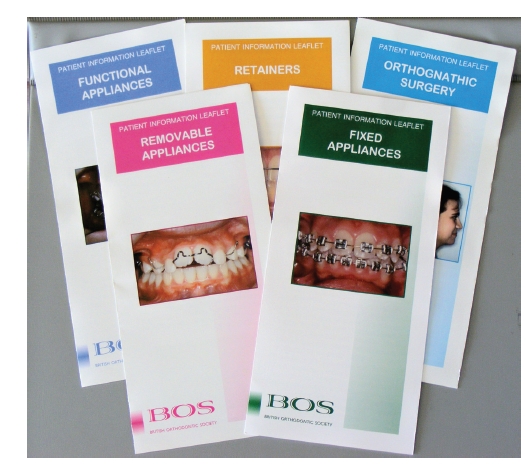Chapter 5
Leaflets
WRITTEN COMMUNICATION – EITHER ADVICE OR INSTRUCTION – THAT IS GIVEN TO THE PATIENT
Orthodontic treatment is complex and the patient needs to play their part in looking after and adjusting their appliances where necessary.
For a patient and their parent an important part of being able to comply with what is being asked of them, is to fully understand:
- exactly what it is that they need to do
- why they are doing it
- what they are aiming to achieve
In order to do that, there must be good communication between the patients and the clinician.
Therefore, we need to:
- create trust between the orthodontic team and the patient
- persuade and influence them to carry out the instructions
- impress on them their role in getting the best result at the end of treatment
Leaflets given to the patient should cover two areas:
- information – what the treatment entails, what the patient can expect, etc.
- instruction – their contribution to the treatment, what they need to do, etc.
There are many leaflets available and the orthodontic nurse needs to select the most appropriate one for each situation.
The British Orthodontic Society produces many excellent leaflets on matters of clinical guidance (Figure 5.1).
These include:
- advice on digit/dummy sucking
- orthodontic management of the medically compromised patient
- advice on the use of headgear and face bows
- use and storage of digital photographs
- orthodontic records – collection and management
Figure 5.1 BOS information leaflets. (Reproduced with the kind permission of the British Orthodontic Society.)

These are some of the many leaflets that are printed on a wide and diverse range of subjects. They are useful for the orthodontic nurse to read and to update on current best practice.
The most commonly used leaflets are the ones that you give to patients. When verbal instructions are given to a patient it is often:
- at the end of a procedure which has been tiring for them
- when they may be anxious
- when they may feel stressed about how strange the appliance feels
- when they and their parents are glad having an appliance fitting is over and are not fully listening to what is being said
- at a time when they and their parents are worried about a specific concern, e.g. needing to have teeth extracted
Often, they do not fully listen to what is being said; they are just listening for and focused on any aspect of concern to them. In many cases, it may be the words ‘extraction’ or ‘headgear’.
When trying to get information across to patients it has been estimated that:
- />
Stay updated, free dental videos. Join our Telegram channel

VIDEdental - Online dental courses


